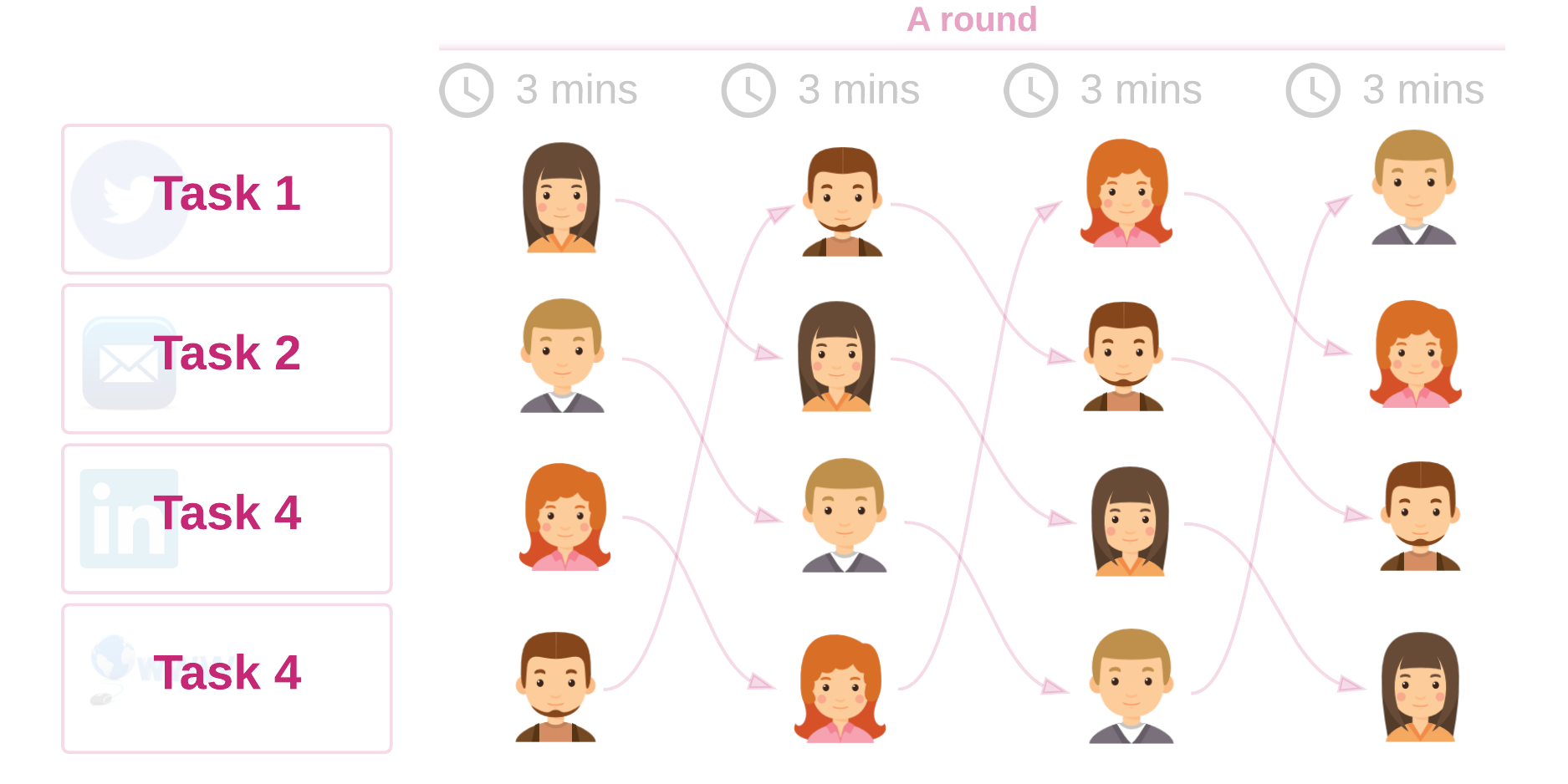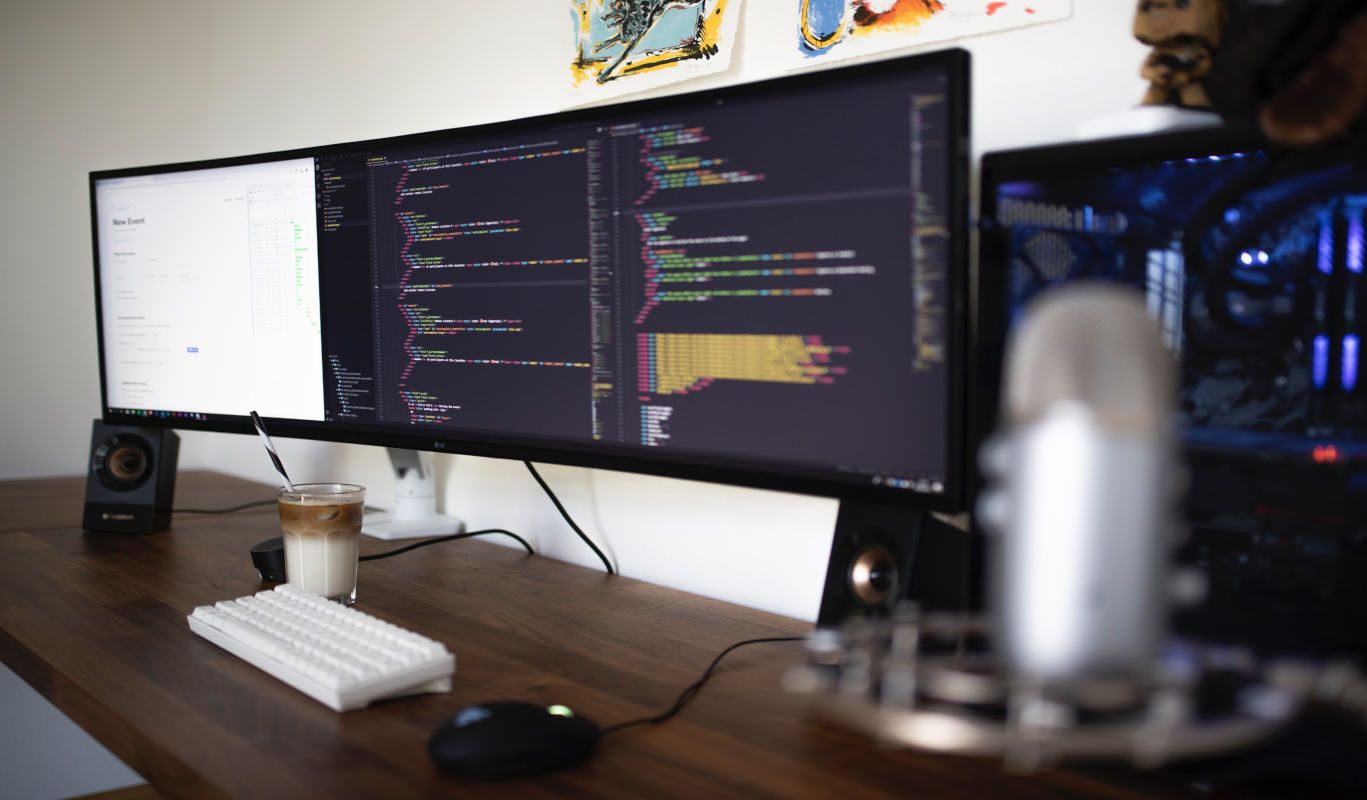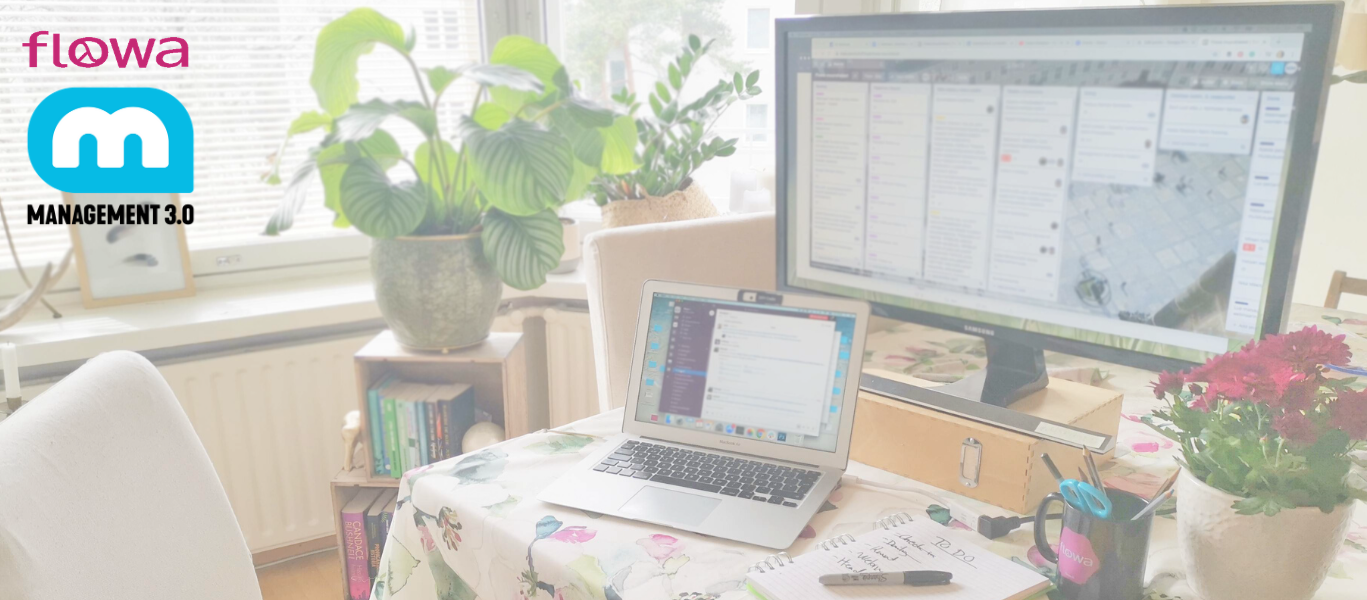One of the problems we have come across is how to effectively produce content together. E.g. write some copy for a web page, come up with a slogan for a new product or brainstorm ideas on how to take over the world.
Pizza co-writing is our favorite method for this. It usually takes only 20-30 mins to generate a lot of good content to work on. Idea in nutshell is the following: Choose focus for ideation and 4-6 categories (or small tasks). Then each participant writes down as many ideas (pieces of content or whatever) in a few minute time box per category one category at time. There are a few more extra rules and constraints but even with them the method is really simple.
This blog post is the second post in Remote patterns and practice blog post series. The first part was Weekly goals.
Why? Context
Pizza co-writing is a great way to tackle the following common problems in creative work:
- Perfectionism and self-censorship. When writing, people often try to make text perfect at the first try. Common consequences are writer’s blocks and slow progress. In pizza co-writing you have an insanely short timebox to write something. You just don’t have time to censor yourself and no-one thinks that your text should be perfect.
- Committee work. Committee work is problematic in various ways: it is slow, it strives for mediocrity, loudest speakers dominate (not the wisest ones), and so on. It can work sometimes, e.g. when full consensus is critical for success. However, generally speaking you should avoid committee work mode. Creating a piece of text with many people can grind to a halt when each sentence is polished and discussed from every angle.
- Linear thinking over lateral thinking. In creative writing lateral thinking is a critical success factor. You need to think from many points of view. Pizza co-writing guarantees you "number of participants" × "number of categories" point of views. In practice, the point of view count is usually 20-30. That's pretty good. When you write copy alone or as committee work it’s rarely over five. You’ll soon learn how.
Setup

You will need a proper digital tool. Fluent co-editing is an absolute must. We use Google Docs. It’s free and co-editing works very well. You also need a timer for the time keeper (see below). Default timer on a mobile phone is good enough.

Book at least 45 minutes for this. Actually, Pizza co-writing exercise takes 20-30 minutes, but before that you probably need to discuss the goal and after the exercise you need some time to prioritize ideas and agree on the next steps.

Ideal size for the group is 4-6 participants. 2-3 participants is okay. We have not tested this with big groups. Our guess is that with 7+ participants you need to use more time to filter and aggregate ideas and there is a risk of idea flood.
How?
Step 1: Define goal. In our case the goal is most commonly something like: “Generate content to market product X” or “How might we reach potential customers for service X?” You can use Pizza technique for any type of ideation. I’ll stick to creative writing and marketing use in this blog post, because that’s how we use this method.
Write each goal to the work document.
Step 2: Define task categories. Divide the goal in tasks.
Example: Goal is "produce material for marketing your new product idea".
The tasks could be:
- A tweet
- An email to potential customers
- A short post to some other social media channel such as LinkedIn or Facebook
- The product description on the web page
Write each category as a header in the work document.
Step 3: Agree timebox for the tasks. Choose the time-keeper. Prefer a short time box, e.g. 2 or 3 minutes. Obviously 2-3 minutes is too little for an email and it's fine. It is critical that the time box is tight and it is completely fine if it is a bit too tight! If people have too much time, they won’t focus on what is most important and essential. Agree also how many rounds you’re going to have and who will take care of the time box.
We usually have 5 task categories, 3 minutes time box and 2 rounds. This means that the actual exercise takes 30 minutes (5 tasks × 3 minutes / task × 2 rounds = 30 minutes).You can also agree if you want to have yet another round after each round. You don't need to fix the round count in the beginning.
Step 4: Specify starting task. Assign each task to a single person. Ideally each participant should start with a different task. If there are more participants than tasks, distribute tasks to participants equally.

Step 5: 1-2-3-Go. All preparations are now done. It’s time to write. Everyone one starts writing stuff under a task. Once the timebox has elapsed, the time keeper says “Go to the next one”. Everyone should switch immediately. They should not complete sentences they were working on.
Because there’s temptation to complete whatever you are doing, the timekeeper should keep on reminding people to not do so and say for instance “Hey, N.N.! Time’s up... Go to the next task category. It's X for you.”
That's all, folks!
You can easily have many rounds with high productivity since the process effectively prevents you from getting stuck. However, usually one or two rounds is enough. After the frantic writing is done you have produced quite a bit of material to work on.
Next steps and follow up
After the exercise you most likely have a lot of material to work on. The next thing to do is to distinguish the best and most valuable stuff from the mediocre stuff, and elaborate them. You can do this with dot voting. In this series we will introduce you to other options as well.
Leadership and Facilitation of Responsive Remote Teams
This post is part of the leadership and facilitation of Responsive Remote Teams article series. Subscribe below to get all the posts straight to your inbox:
Acknowledgment
Awesome hero image (check out the original) is taken by
Related resources


If you are interested in learning more about facilitation and leadership in remote teams
Public workshop series for change agents

Internal workshop series for companies


